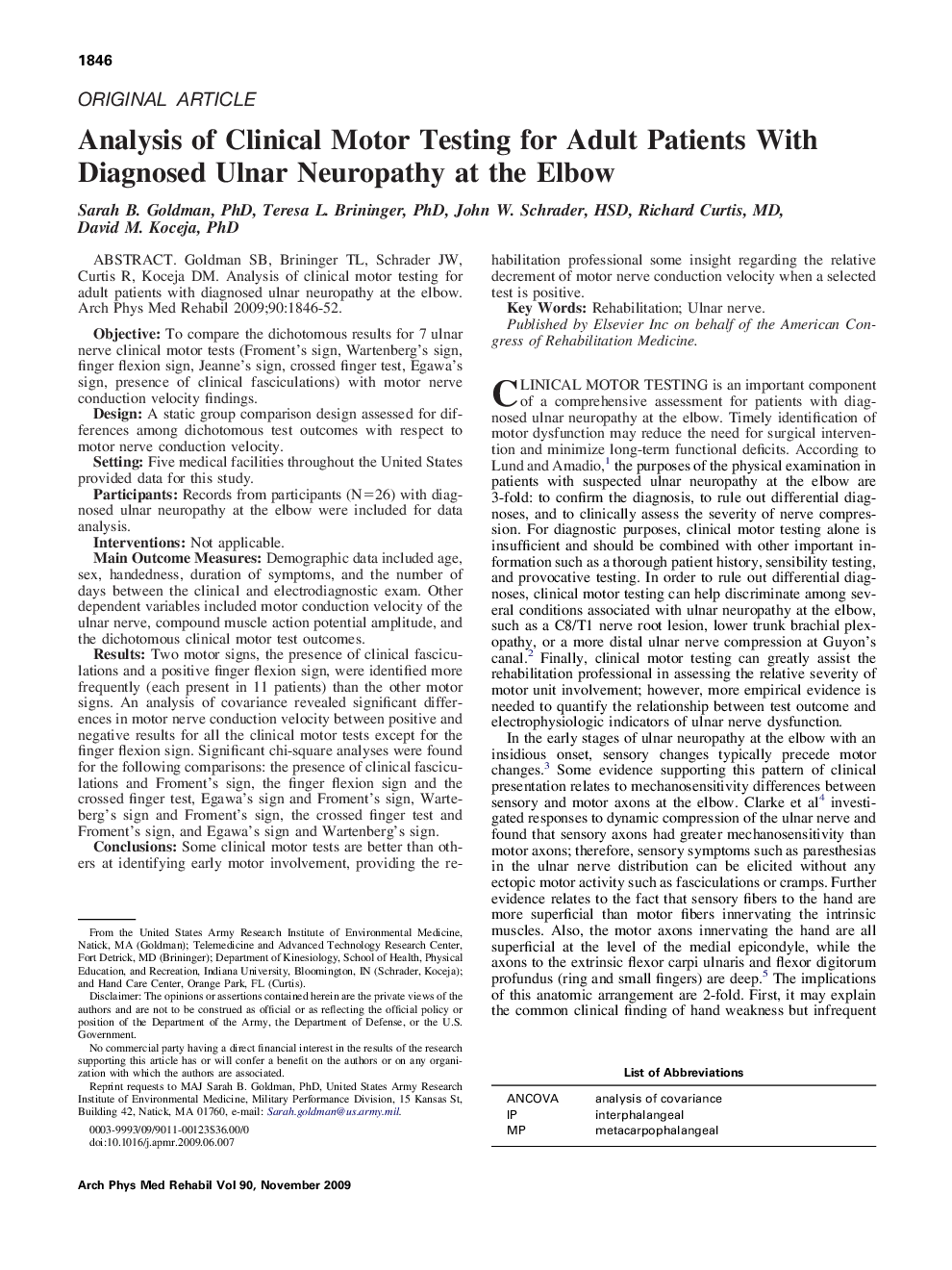| کد مقاله | کد نشریه | سال انتشار | مقاله انگلیسی | نسخه تمام متن |
|---|---|---|---|---|
| 3451212 | 1595759 | 2009 | 7 صفحه PDF | دانلود رایگان |

Goldman SB, Brininger TL, Schrader JW, Curtis R, Koceja DM. Analysis of clinical motor testing for adult patients with diagnosed ulnar neuropathy at the elbow.ObjectiveTo compare the dichotomous results for 7 ulnar nerve clinical motor tests (Froment's sign, Wartenberg's sign, finger flexion sign, Jeanne's sign, crossed finger test, Egawa's sign, presence of clinical fasciculations) with motor nerve conduction velocity findings.DesignA static group comparison design assessed for differences among dichotomous test outcomes with respect to motor nerve conduction velocity.SettingFive medical facilities throughout the United States provided data for this study.ParticipantsRecords from participants (N=26) with diagnosed ulnar neuropathy at the elbow were included for data analysis.InterventionsNot applicable.Main Outcome MeasuresDemographic data included age, sex, handedness, duration of symptoms, and the number of days between the clinical and electrodiagnostic exam. Other dependent variables included motor conduction velocity of the ulnar nerve, compound muscle action potential amplitude, and the dichotomous clinical motor test outcomes.ResultsTwo motor signs, the presence of clinical fasciculations and a positive finger flexion sign, were identified more frequently (each present in 11 patients) than the other motor signs. An analysis of covariance revealed significant differences in motor nerve conduction velocity between positive and negative results for all the clinical motor tests except for the finger flexion sign. Significant chi-square analyses were found for the following comparisons: the presence of clinical fasciculations and Froment's sign, the finger flexion sign and the crossed finger test, Egawa's sign and Froment's sign, Warteberg's sign and Froment's sign, the crossed finger test and Froment's sign, and Egawa's sign and Wartenberg's sign.ConclusionsSome clinical motor tests are better than others at identifying early motor involvement, providing the rehabilitation professional some insight regarding the relative decrement of motor nerve conduction velocity when a selected test is positive.
Journal: Archives of Physical Medicine and Rehabilitation - Volume 90, Issue 11, November 2009, Pages 1846–1852